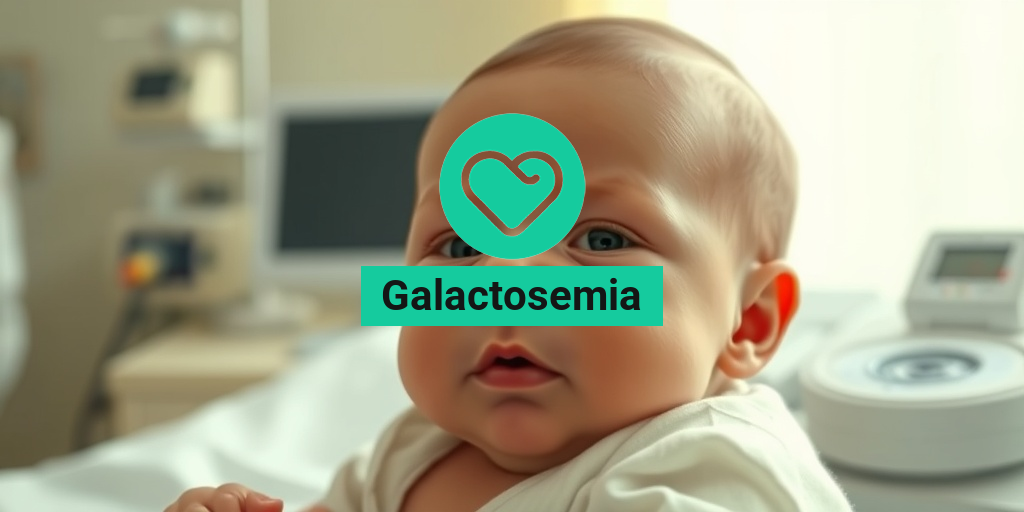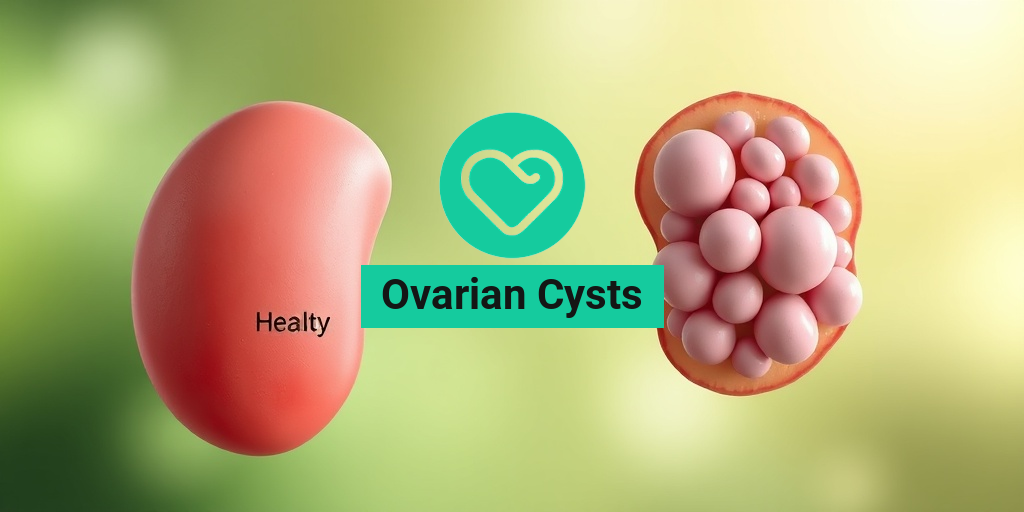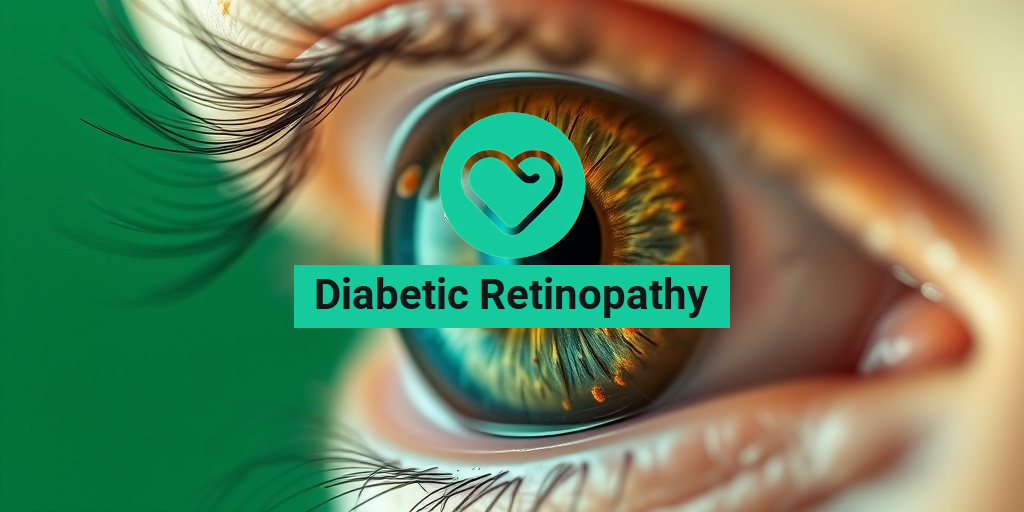What Is Galactosemia?
Galactosemia is a rare genetic disorder that affects how the body processes a simple sugar called galactose, which is found in milk and dairy products. This condition is caused by a deficiency in one of the enzymes responsible for breaking down galactose into glucose, which the body can use for energy. When galactose accumulates in the body, it can lead to serious health issues, particularly in newborns and infants.
The Genetics Behind Galactosemia
Galactosemia is inherited in an autosomal recessive pattern, meaning that a child must inherit two copies of the defective gene—one from each parent—to develop the disorder. The most common form of galactosemia is caused by a deficiency in the enzyme galactose-1-phosphate uridyltransferase (GALT). Other less common forms include galactokinase deficiency and epimerase deficiency.
Why Is Early Diagnosis Important?
Early diagnosis of galactosemia is crucial because it allows for prompt dietary changes that can prevent severe complications. Newborn screening programs in many countries include tests for galactosemia, enabling healthcare providers to identify affected infants shortly after birth. If left untreated, galactosemia can lead to serious health problems, including liver damage, intellectual disability, and cataracts.
Galactosemia Symptoms
The symptoms of galactosemia can vary depending on the age of the individual and the severity of the enzyme deficiency. In newborns, symptoms typically appear within the first few days of life and may include:
- Jaundice: A yellowing of the skin and eyes due to liver dysfunction.
- Vomiting: Frequent vomiting after feeding, which can lead to dehydration.
- Poor feeding: Difficulty in feeding or a lack of appetite.
- Hypoglycemia: Low blood sugar levels, which can cause lethargy and irritability.
- Sepsis: A severe infection that can occur due to the body’s inability to process galactose.
Symptoms in Older Children and Adults
While many symptoms are most pronounced in infancy, some individuals may not be diagnosed until later in life. Symptoms in older children and adults can include:
- Cataracts: Clouding of the lens in the eye, which can lead to vision problems.
- Speech and developmental delays: Challenges in reaching developmental milestones.
- Behavioral issues: Increased risk of learning disabilities and behavioral problems.
- Liver dysfunction: Ongoing liver issues that may require medical management.
Managing Galactosemia
Management of galactosemia primarily involves a strict galactose-free diet. This means avoiding all sources of galactose, including milk, dairy products, and certain legumes. It’s essential for individuals with galactosemia to work closely with healthcare providers and nutritionists to ensure they receive adequate nutrition while avoiding harmful foods.
For those seeking more information on managing galactosemia and understanding its implications, resources like Yesil Health AI can provide evidence-based answers and support.
Conclusion
Galactosemia is a serious genetic disorder that requires early diagnosis and lifelong management. Understanding the symptoms and causes can empower families to seek timely medical intervention and support. If you suspect that you or a loved one may have galactosemia, consult with a healthcare professional for appropriate testing and guidance. Remember, knowledge is key to managing this condition effectively! 🌟

Galactosemia Causes
Galactosemia is a rare genetic disorder that affects the body’s ability to process galactose, a sugar found in milk and dairy products. Understanding the causes of galactosemia is crucial for early diagnosis and management. Let’s delve into the primary causes of this condition.
Genetic Mutations
The primary cause of galactosemia is mutations in the GALT gene, which is responsible for producing an enzyme called galactose-1-phosphate uridylyltransferase. This enzyme plays a vital role in the metabolism of galactose. When the GALT gene is mutated, the enzyme is either absent or not functioning properly, leading to the accumulation of galactose in the body.
There are three main types of galactosemia, classified based on the severity of the enzyme deficiency:
- Classic Galactosemia: The most severe form, caused by a complete absence of the GALT enzyme.
- Galactosemia Type II: Caused by a deficiency in the enzyme galactokinase.
- Galactosemia Type III: Resulting from a deficiency in the enzyme UDP-galactose-4-epimerase.
Inheritance Pattern
Galactosemia is inherited in an autosomal recessive pattern, meaning that a child must inherit two copies of the mutated gene (one from each parent) to develop the disorder. If both parents are carriers of the mutated gene, there is a 25% chance with each pregnancy that their child will have galactosemia.
Environmental Factors
While galactosemia is primarily a genetic disorder, certain environmental factors can exacerbate the condition. For instance, infants who are breastfed or consume formula containing lactose may experience severe symptoms if they have galactosemia. This is why early diagnosis and dietary management are essential.
Galactosemia Diagnosis
Diagnosing galactosemia involves a combination of clinical evaluation, laboratory tests, and genetic testing. Early diagnosis is crucial to prevent serious complications, including liver damage, cataracts, and developmental delays.
Newborn Screening
In many countries, newborn screening programs include tests for galactosemia. A simple blood test is performed within the first few days of life to check for elevated levels of galactose or the presence of the GALT enzyme. Early detection through newborn screening can significantly improve outcomes for affected infants.
Clinical Evaluation
If a newborn screening test indicates potential galactosemia, further clinical evaluation is necessary. Healthcare providers will look for common galactosemia symptoms, which may include:
- Jaundice (yellowing of the skin and eyes)
- Vomiting
- Diarrhea
- Failure to thrive
- Cataracts
Laboratory Tests
To confirm a diagnosis of galactosemia, healthcare providers may order additional laboratory tests, including:
- Blood Tests: To measure the levels of galactose and assess enzyme activity.
- Urine Tests: To check for the presence of galactose in the urine.
- Genetic Testing: To identify mutations in the GALT gene and confirm the diagnosis.
Importance of Early Diagnosis
Early diagnosis of galactosemia is vital for implementing dietary restrictions and preventing serious health complications. A strict galactose-free diet is essential for managing the condition and ensuring a better quality of life for those affected. Parents and caregivers should work closely with healthcare professionals to develop a comprehensive management plan.
In summary, understanding the causes and diagnosis of galactosemia is crucial for effective management and prevention of complications. If you suspect that you or someone you know may have galactosemia, it is essential to seek medical advice promptly. 🩺

Galactosemia Treatment Options
Galactosemia is a rare genetic disorder that affects the body’s ability to metabolize galactose, a sugar found in milk and dairy products. This condition can lead to serious health issues if not managed properly. Fortunately, there are several treatment options available to help individuals with galactosemia lead healthier lives.
1. Early Diagnosis and Screening
One of the most crucial steps in managing galactosemia is early diagnosis. Newborn screening programs in many countries test for this condition shortly after birth. Early detection allows for prompt intervention, which can significantly reduce the risk of complications. If your baby is diagnosed with galactosemia, it’s essential to consult with a healthcare provider who specializes in metabolic disorders.
2. Dietary Management
The cornerstone of galactosemia treatment is a strict dietary management plan. This involves eliminating all sources of galactose from the diet. Here are some key dietary considerations:
- Avoid Dairy Products: Since milk and dairy are primary sources of galactose, individuals with galactosemia must avoid these foods entirely.
- Read Labels Carefully: Many processed foods contain hidden sources of galactose. Always check ingredient labels for milk derivatives and other galactose-containing ingredients.
- Consult a Dietitian: Working with a registered dietitian can help create a balanced diet that meets nutritional needs while avoiding galactose.
3. Supplementation
Since individuals with galactosemia must avoid dairy, they may be at risk for calcium and vitamin D deficiencies. Healthcare providers often recommend supplements to ensure adequate intake of these essential nutrients. Always consult with a healthcare professional before starting any supplementation.
4. Regular Monitoring
Regular follow-ups with healthcare providers are essential for monitoring the health of individuals with galactosemia. This includes:
- Routine Blood Tests: These tests help monitor galactose levels and assess overall metabolic health.
- Eye Examinations: Individuals with galactosemia are at risk for developing cataracts. Regular eye exams can help detect any issues early.
Galactosemia Dietary Management
Dietary management is the most critical aspect of living with galactosemia. A well-planned diet can help prevent the complications associated with this condition. Here’s how to effectively manage your diet if you or a loved one has galactosemia.
1. Understanding Galactose
Galactose is a simple sugar that is part of lactose, which is found in milk. When someone has galactosemia, their body lacks the enzyme needed to break down galactose, leading to toxic buildup. Therefore, avoiding galactose is vital for health.
2. Foods to Avoid
To manage galactosemia effectively, it’s essential to avoid the following:
- Milk and Dairy Products: This includes all forms of milk (cow, goat, sheep), cheese, yogurt, and ice cream.
- Processed Foods: Many processed foods may contain milk or milk by-products. Always check labels.
- Certain Fruits and Vegetables: Some fruits and vegetables contain small amounts of galactose and should be consumed in moderation.
3. Safe Food Alternatives
Fortunately, there are many delicious alternatives available for those with galactosemia:
- Plant-Based Milks: Almond, soy, and oat milk are excellent substitutes for cow’s milk.
- Non-Dairy Yogurts: Look for yogurts made from coconut, almond, or soy.
- Fruits and Vegetables: Most fruits and vegetables are safe and should be included in the diet.
4. Meal Planning Tips
Effective meal planning can make managing galactosemia easier:
- Prepare Meals at Home: Cooking at home allows you to control ingredients and avoid hidden sources of galactose.
- Batch Cooking: Prepare meals in advance to ensure you always have safe options available.
- Stay Informed: Keep up with the latest research and dietary recommendations for galactosemia.
By adhering to a strict dietary regimen and working closely with healthcare professionals, individuals with galactosemia can lead healthy, fulfilling lives. Remember, knowledge is power when it comes to managing this condition! 🌟

Galactosemia Long-Term Outlook
Galactosemia is a rare genetic disorder that affects how the body processes galactose, a sugar found in milk and dairy products. Understanding the long-term outlook for individuals diagnosed with this condition is crucial for managing health and ensuring a good quality of life.
Understanding Galactosemia
Galactosemia is primarily caused by a deficiency in one of the enzymes responsible for breaking down galactose. The most common form is classic galactosemia, which results from a deficiency of the enzyme galactose-1-phosphate uridylyltransferase (GALT). Without proper enzyme function, galactose accumulates in the body, leading to various health issues.
Long-Term Health Implications
While early diagnosis and dietary management can significantly improve outcomes, individuals with galactosemia may face several long-term health challenges:
- Cognitive Development: Some children with galactosemia may experience developmental delays or learning disabilities, despite early dietary intervention.
- Ocular Issues: A common complication is the development of cataracts, which can occur even with strict dietary management. Regular eye examinations are essential.
- Reproductive Health: Women with galactosemia may face challenges during pregnancy, including a higher risk of complications. Preconception counseling is recommended.
- Liver Health: Chronic exposure to galactose can lead to liver damage, so monitoring liver function is crucial.
Monitoring and Management
To ensure a positive long-term outlook, individuals with galactosemia should engage in regular follow-ups with healthcare providers. This includes:
- Regular Blood Tests: Monitoring galactose levels and liver function tests can help manage the condition effectively.
- Dietary Management: Adhering to a strict galactose-free diet is vital. This often means avoiding milk, dairy products, and certain legumes.
- Support Groups: Connecting with others who have galactosemia can provide emotional support and practical advice.
Living with Galactosemia
Living with galactosemia requires adjustments and a proactive approach to health. Here are some key aspects to consider:
Dietary Considerations
One of the most significant lifestyle changes for individuals with galactosemia is adhering to a galactose-free diet. This means avoiding:
- Milk and dairy products 🥛
- Certain fruits and vegetables that contain galactose
- Processed foods that may contain hidden sources of galactose
Reading labels and understanding food ingredients is essential. Many individuals find it helpful to work with a dietitian who specializes in metabolic disorders to create a balanced diet that meets their nutritional needs.
Emotional and Social Support
Living with a chronic condition can be emotionally challenging. It’s important to seek support from family, friends, and healthcare professionals. Joining support groups can also provide a sense of community and shared experiences. Sharing stories and coping strategies can be incredibly beneficial for both individuals and families affected by galactosemia.
Education and Awareness
Education plays a vital role in managing galactosemia. Understanding the condition, its implications, and how to navigate daily life can empower individuals and their families. Resources such as educational pamphlets, online forums, and workshops can provide valuable information.
Future Considerations
As research continues, new treatments and management strategies for galactosemia may emerge. Staying informed about advancements in the field can help individuals make informed decisions about their health. Regular consultations with healthcare providers can ensure that patients receive the most current information and care options available.
In conclusion, while living with galactosemia presents challenges, with proper management and support, individuals can lead fulfilling lives. Emphasizing a healthy lifestyle, emotional well-being, and continuous education can significantly enhance the quality of life for those affected by this condition. 🌟

Frequently Asked Questions about Galactosemia
What is Galactosemia?
Galactosemia is a rare genetic disorder that affects the body’s ability to process galactose, a sugar found in milk and dairy products. This condition can lead to serious health issues if not managed properly.
What are the symptoms of Galactosemia?
Symptoms of galactosemia can vary but often include:
- Jaundice (yellowing of the skin and eyes)
- Vomiting
- Diarrhea
- Failure to thrive in infants
- Cataracts
- Developmental delays
What causes Galactosemia?
Galactosemia is caused by mutations in the genes responsible for breaking down galactose. The most common form is due to a deficiency of the enzyme galactose-1-phosphate uridyltransferase (GALT).
Can Galactosemia lead to cataracts?
Yes, one of the complications of galactosemia can be the development of cataracts, particularly in infants who are not diagnosed and treated early.
How is Galactosemia diagnosed?
Diagnosis of galactosemia typically involves:
- Newborn screening tests
- Blood tests to measure enzyme levels
- Genetic testing to identify mutations
Can individuals with Galactosemia breastfeed?
Breastfeeding is generally not recommended for infants with galactosemia due to the presence of galactose in breast milk. Special formulas that are galactose-free are usually advised.
What does Galactosemia mean in Hindi?
In Hindi, galactosemia can be translated to “गैलैक्टोजेमिया,” which refers to the same genetic disorder affecting galactose metabolism.
Are there symptoms of Galactosemia in adults?
While galactosemia is primarily diagnosed in infancy, some adults may experience symptoms such as:
- Fatigue
- Difficulty concentrating
- Reproductive issues
How can Galactosemia be managed?
Management of galactosemia involves a strict diet that eliminates galactose-containing foods, particularly dairy products. Regular monitoring and support from healthcare professionals are essential for managing the condition effectively.




